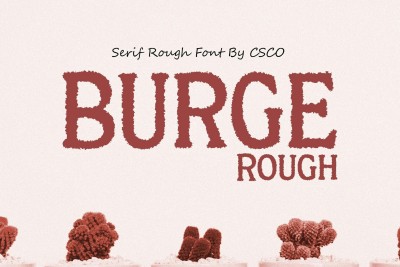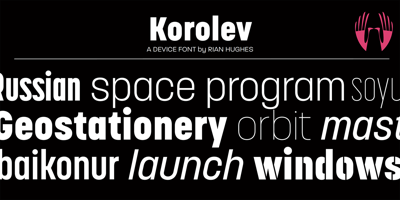Best Free Fonts for Website Design: Expert Tips for 2025
Best Free Fonts for Website Design: Expert Tips for 2025
In the competitive landscape of American web design, choosing the right fonts can make the difference between a website that converts and one that users abandon within seconds. While premium fonts have their place, the abundance of high-quality free fonts available in 2025 means you can create stunning, professional websites without breaking your budget.
This comprehensive guide reveals the best free fonts that American designers and developers are using to create engaging, accessible, and conversion-optimized websites. Whether you're building a tech startup's landing page, an e-commerce platform, or a personal portfolio, these expert-curated font selections will help you make typography choices that resonate with modern users.
The Current State of Free Web Fonts
The free font landscape has transformed dramatically over the past few years. Google Fonts now offers over 1,400 font families, Adobe has open-sourced several premium typefaces, and independent designers regularly release high-quality fonts under permissive licenses.
This abundance creates both opportunities and challenges. While you have access to professional-grade typography without licensing fees, the sheer volume of options can overwhelm decision-making. The key is understanding which fonts perform best across different contexts and user scenarios.
Modern free fonts are increasingly sophisticated, featuring multiple weights, language support, and optimization for various screen types. Many now include variable font technology, allowing fine-tuned control over weight, width, and other parameters within a single file.
The quality gap between free and premium fonts has narrowed significantly, with many free options now matching or exceeding the technical specifications and aesthetic quality of their paid counterparts.
Top Free Fonts for Headlines and Display Text
Inter: Originally designed for user interfaces, Inter has become the go-to choice for American tech companies and startups. Its exceptional readability at all sizes, combined with a modern, approachable aesthetic, makes it perfect for headlines that need to grab attention without sacrificing clarity.
Montserrat: Inspired by urban typography from Buenos Aires, Montserrat offers elegant geometry with human warmth. Its extensive weight range (from thin to black) provides flexibility for creating strong visual hierarchies. American fashion and lifestyle brands particularly favor this font for its sophisticated yet approachable character.
Oswald: A reimagining of classic condensed fonts, Oswald delivers maximum impact in minimal space. Its bold, compressed letterforms make it ideal for headlines where space is limited but impact is crucial. News websites and advertising agencies frequently use Oswald for attention-grabbing headlines.
Playfair Display: This high-contrast serif brings editorial elegance to digital spaces. Originally designed for large sizes, Playfair Display works beautifully for headlines requiring sophistication and authority. Luxury brands and content-heavy websites benefit from its distinctive character and excellent readability.
Bebas Neue: The quintessential all-caps display font, Bebas Neue delivers industrial strength and modern appeal. Its condensed proportions make it perfect for impactful headlines and branding elements. Creative agencies and entertainment companies frequently choose Bebas Neue for its bold personality.
Essential Body Text Fonts for Readability
Source Sans Pro: Adobe's first open-source font family was specifically designed for user interfaces and extended reading. Its clean, neutral character makes it exceptionally readable across all devices and screen resolutions. The comprehensive weight range and excellent hinting make it a reliable choice for any website requiring sustained reading.
Open Sans: One of the most popular web fonts globally, Open Sans combines friendliness with authority. Its optimized letterforms ensure excellent readability at small sizes, while its humanist characteristics prevent text from feeling cold or mechanical. E-commerce sites and corporate websites consistently choose Open Sans for its versatility and trustworthiness.
Lato: Meaning "summer" in Polish, Lato brings warmth and approachability to web content. Its semi-rounded details give it personality without sacrificing professionalism. The extensive language support makes it ideal for international websites targeting diverse American markets.
Roboto: Google's signature font balances geometric precision with friendly curves. Originally designed for Android, Roboto has proven its worth across all digital platforms. Its multiple weights and styles provide designers with comprehensive typographic tools for creating cohesive brand experiences.
Merriweather: Designed specifically for screen reading, Merriweather is an excellent serif option for body text. Its condensed letterforms and large x-height ensure readability even at smaller sizes, while its character gives content more personality than typical sans-serif alternatives.
Specialized Fonts for Specific Industries
Technology and SaaS Companies: System fonts like SF Pro (Apple), Segoe UI (Microsoft), and Roboto (Google) provide native performance and familiar user experiences. These fonts load instantly and integrate seamlessly with operating system interfaces, creating cohesive user experiences that feel professional and trustworthy.
Creative Agencies and Portfolios: Fonts with personality help creative professionals stand out. Consider Archivo for its architectural precision, Work Sans for its approachable professionalism, or Crimson Text for projects requiring editorial sophistication.
E-commerce and Retail: Clear, trustworthy fonts that work well across product catalogs and checkout processes are essential. Nunito Sans offers friendly professionalism, while PT Sans provides excellent multilingual support for international retail operations.
Health and Wellness: Fonts that convey care and trustworthiness are crucial in healthcare contexts. Source Serif Pro combines authority with approachability, while Lora offers elegant readability that doesn't intimidate users seeking health information.
Finance and Professional Services: Traditional serif fonts like Crimson Text or modern sans-serifs like IBM Plex Sans help establish credibility and trust. These fonts signal professionalism while maintaining excellent readability across complex financial information.
Mobile-First Font Selection Strategy
With mobile traffic dominating American web usage, font choices must prioritize mobile reading experiences. Several factors become critical when optimizing typography for smaller screens.
System Font Integration: Using system fonts (San Francisco on iOS, Roboto on Android) provides optimal performance and familiar user experiences. These fonts are pre-installed, load instantly, and integrate seamlessly with mobile operating systems.
Readable Font Sizes: Maintain minimum 16px font sizes for body text on mobile devices. Smaller text frustrates users and can hurt conversion rates. Consider implementing responsive typography that scales appropriately across different screen sizes.
Touch-Friendly Spacing: Ensure adequate spacing around clickable text elements. Mobile users need sufficient touch targets, and proper typography spacing contributes to better user experience and reduced accidental clicks.
Performance Optimization: Choose fonts with optimized file sizes and efficient loading characteristics. Variable fonts can provide styling flexibility while minimizing bandwidth usage – crucial for users on limited data plans.
Advanced Implementation Techniques
Font Loading Optimization: Implement proper font loading strategies to prevent layout shifts and improve perceived performance. Use font-display: swap to show fallback fonts immediately while custom fonts load in the background.
Variable Font Integration: Take advantage of variable fonts for more efficient loading and greater design flexibility. Fonts like Inter Variable allow fine-tuned control over weight and width without requiring separate font files.
Font Subsetting: Only load the characters you actually need. Most American websites don't require extensive international character sets, so subsetting can significantly reduce file sizes and improve loading performance.
Strategic Preloading: Preload critical fonts (usually headline and body text fonts) to improve loading performance and reduce layout shifts that can hurt user experience.
Typography Pairing Strategies
Successful font combinations create visual hierarchy while maintaining cohesive brand experiences. Follow these proven pairing approaches for optimal results.
Contrast Pairing: Combine serif headlines with sans-serif body text (or vice versa) to create clear hierarchy and visual interest. Popular combinations include Playfair Display with Source Sans Pro or Crimson Text with Open Sans.
Weight Variation: Use different weights of the same font family to create hierarchy without introducing multiple typefaces. This approach ensures visual cohesion while providing clear content structure.
Complementary Styles: Pair fonts that share similar proportions or characteristics while offering stylistic contrast. Montserrat headlines work well with Lato body text because both share humanist characteristics despite their different classifications.
Accessibility and Legal Considerations
Color Contrast Requirements: Ensure sufficient contrast between text and background colors to meet WCAG accessibility guidelines. Poor contrast can exclude users with visual impairments and potentially expose websites to legal liability.
Font Size Accessibility: Maintain readable font sizes that work for users with varying visual abilities. Consider implementing user-controlled font sizing options for enhanced accessibility.
Screen Reader Compatibility: Choose fonts that work well with assistive technologies. Clean, well-hinted fonts typically provide better experiences for users relying on screen readers.
License Compliance: Verify that free fonts include appropriate licensing for commercial use. Most Google Fonts and Adobe Fonts are licensed for commercial projects, but always confirm licensing terms before implementation.
Performance Impact and Optimization
Font choices directly impact website performance metrics that affect user experience and search engine rankings. Consider these optimization strategies.
File Size Management: Limit font variations to essential weights and styles. Loading unnecessary font variations increases page weight and slows loading times.
Caching Strategies: Leverage browser caching and CDN delivery for optimal font loading performance. Google Fonts automatically provides optimized delivery and caching.
Fallback Font Selection: Choose fallback fonts that closely match your primary fonts' metrics to minimize layout shifts when custom fonts load.
Future-Proofing Your Font Strategy
Variable Font Adoption: As browser support improves, variable fonts will become increasingly important for efficient, flexible web typography. Begin experimenting with variable fonts for future projects.
Performance Standards: Web performance standards continue evolving, making efficient font loading increasingly important for competitive advantage.
User Experience Evolution: Typography trends shift based on user behavior changes and technological advancement. Stay informed about emerging best practices and user expectations.
Choosing the right free fonts for your website in 2025 requires balancing aesthetic goals with performance requirements, accessibility standards, and user experience expectations. The fonts recommended in this guide provide proven foundations for creating engaging, professional websites that serve American audiences effectively. Remember that great typography supports your content and business goals rather than drawing attention to itself. Choose fonts that enhance your message, improve user experience, and help achieve your website's objectives.


